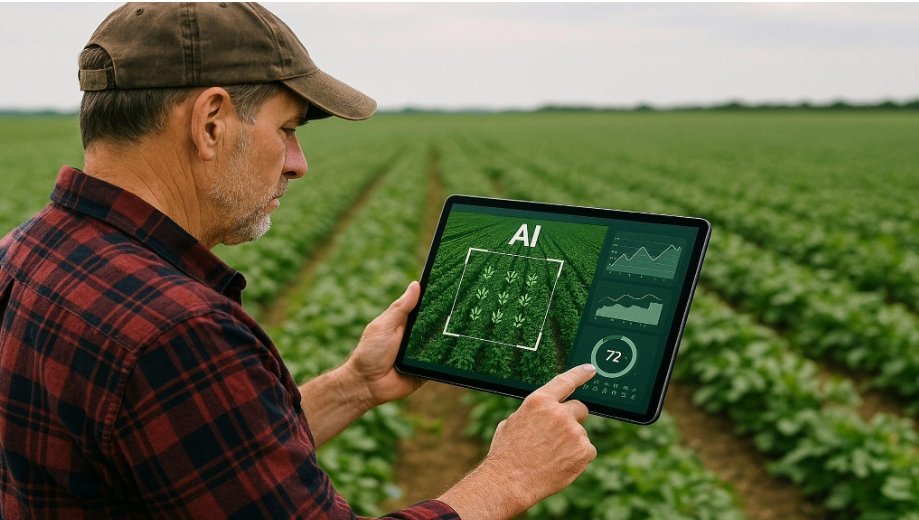Smart Farming Technology: Essential Equipment from Power Solutions to Weather Monitoring
Singapore’s agriculture sector is undergoing a remarkable transformation. Despite limited land space, the nation’s farms are becoming showcases for how technology can maximize productivity, efficiency, and sustainability. From high-tech vertical farms in industrial buildings to traditional farms adopting smart sensors, modern farming in Singapore increasingly relies on sophisticated equipment that requires careful planning and reliable infrastructure.
The Smart Farming Revolution in Singapore
The Singapore government has set ambitious targets for local food production as part of the “30 by 30” vision. This initiative aims to produce 30% of Singapore’s nutritional needs locally by 2030. Technology adoption isn’t optional for achieving these goals; it’s essential for maximizing output from our limited agricultural land.
Smart farming encompasses everything from automated irrigation systems to climate-controlled greenhouses and data-driven crop management. These systems rely on interconnected sensors, monitors, and control devices that continuously collect data and adjust growing conditions.
Understanding the essential equipment and infrastructure that make this possible helps farmers make informed investment decisions.
Weather Monitoring: The Foundation of Smart Agriculture
Weather conditions profoundly impact agricultural outcomes. Temperature fluctuations, humidity levels, rainfall patterns, and wind conditions all affect crop health, pest pressure, and optimal planting or harvesting windows. Traditional farming relied on general weather forecasts and farmer intuition, but modern agriculture demands precision.
Why On-Farm Weather Monitoring Matters
Singapore’s tropical climate presents unique challenges for agriculture. High humidity, intense rainfall, and consistent temperatures create conditions where small variations significantly impact crop performance.
A weather monitoring station for farms provides hyperlocal data specific to your farm’s microclimate, which can differ substantially from regional forecasts.
These stations continuously measure temperature, humidity, rainfall, wind speed, and sometimes solar radiation and soil moisture. The data feeds into farm management systems that can trigger automated responses like activating irrigation when soil moisture drops or closing greenhouse vents when humidity rises. This real-time responsiveness prevents crop stress and optimizes growing conditions.
Selecting the Right Weather Station
Weather stations range from basic consumer models to professional agricultural systems. Consumer weather stations cost $100-300 and provide basic measurements suitable for hobbyist farmers or small operations.
Professional agricultural weather stations typically cost $1,000-5,000 and offer higher accuracy, more sensors, better durability, and integration capabilities with farm management software.
Consider sensor accuracy requirements for your crops. Leafy vegetables might tolerate broader environmental ranges, while orchids or specialty crops often require precise condition monitoring.
Durability matters in Singapore’s harsh tropical environment, with intense sun, heavy rainfall, and high humidity, which quickly degrade equipment not designed for these conditions.
Connectivity options determine how you access weather data. Some stations require manual reading of displays, while others transmit data wirelessly to computers or smartphones. Cloud-connected systems enable remote monitoring and historical data analysis, valuable features for serious farming operations.
Installing Weather Monitoring Systems
Proper installation significantly affects data accuracy. Weather stations should be installed in locations representative of growing areas, away from buildings or structures that create microclimates.
Temperature sensors need protection from direct sunlight while maintaining adequate airflow, typically achieved through radiation shields.
Height placement follows standardized guidelines for consistency and accuracy. Temperature and humidity sensors typically mount 1.5-2 meters above ground, while rain gauges need clear overhead space away from trees or structures.
Wind sensors require mounting higher, typically 10 meters above ground, though farm-scale installations often compromise at lower heights.
Regular maintenance ensures continued accuracy. Sensors accumulate dust, bird droppings, and debris that affect readings if not cleaned regularly. Singapore’s environment requires monthly cleaning for most sensors, with more frequent attention during dusty periods or near construction areas.
Power Infrastructure: Keeping Systems Running
Smart farming equipment requires reliable power supplies. Weather stations, irrigation controllers, sensors, monitoring cameras, and environmental controls all need continuous power to function effectively. Planning adequate power infrastructure prevents system failures that could jeopardize crops.
Understanding Power Requirements
Different equipment has varying power needs. Weather stations typically consume minimal power, often running on solar panels with battery backup. Irrigation pumps and climate control systems require substantial power, often necessitating dedicated electrical circuits. Sensors and monitoring devices fall somewhere between, with modest but continuous power draw.
Calculate total power requirements before expanding smart farming systems. Add up the wattage of all devices, include safety margins for startup surges, and ensure your electrical infrastructure can supply adequate power. Undersized electrical systems create reliability issues and potential safety hazards.
Reliable Charging Solutions
Many modern farming devices use rechargeable batteries rather than continuous power connections. Tablets for farm management, portable soil sensors, drone batteries, and handheld monitoring devices all require regular charging.
Having a reliable charging infrastructure prevents workflow disruptions when devices run out of power at critical moments.
Quality charging cables and adapters prove essential for maintaining this fleet of devices. Singapore’s electronics market offers extensive options, with retailers providing everything from basic USB cables to specialized charging solutions.
When sourcing charging cables from Singapore suppliers, prioritize durability over price. Farm environments are harsh on electronics.
Outdoor Power Challenges
Farm equipment often operates outdoors in Singapore’s challenging tropical conditions. Heavy rain, high humidity, and intense sun exposure threaten electrical systems not designed for these conditions. Weatherproof enclosures protect sensitive equipment, but they must allow adequate ventilation to prevent heat buildup that damages electronics.
Solar power provides excellent solutions for remote sensors and monitoring equipment. Small solar panels keep batteries charged without requiring trenching cables across fields. Battery-powered devices with solar charging can operate indefinitely in remote locations, expanding monitoring capabilities without expensive electrical infrastructure.
Surge protection becomes critical in agricultural settings. Lightning strikes and power fluctuations common in tropical storms can destroy expensive equipment. Surge protectors, properly grounded systems, and lightning arrestors provide necessary protection, though they add cost to installations.
Sensors and Monitoring Equipment
Beyond weather monitoring, modern farms employ numerous other sensors. Soil moisture sensors prevent over- or underwatering by measuring actual soil conditions rather than relying on schedules. pH sensors help maintain optimal soil chemistry for crop health. Light sensors ensure plants receive adequate illumination in greenhouse environments.
Soil Monitoring Systems
Soil conditions fundamentally affect crop performance. Moisture sensors typically use capacitance or time-domain reflectometry to measure water content at various soil depths. Data feeds into irrigation controllers that water only when needed, conserving water while ensuring crops never experience drought stress.
Nutrient sensors represent emerging technology that can measure nitrogen, phosphorus, and potassium levels in soil. These systems remain expensive but show promise for precision fertilization that applies nutrients exactly where and when needed. Early adopters in Singapore’s high-value specialty crop sectors are beginning to implement these advanced systems.
Environmental Sensors for Controlled Environments
Greenhouse and indoor farming operations require extensive environmental monitoring. Temperature, humidity, CO2 levels, and light intensity all require continuous monitoring and control. Integrated systems combine multiple sensors with automated environmental controls that maintain optimal conditions regardless of external weather.
These systems generate substantial data that smart farming platforms analyze to identify patterns and optimization opportunities. Machine learning algorithms can predict when conditions might drift out of optimal ranges and preemptively adjust controls, providing more stable environments than manual management achieves.
Connectivity and Data Management
Smart farming equipment generates enormous amounts of data. Weather stations record measurements every few minutes, soil sensors provide continuous readings, and cameras capture thousands of images. Managing this data requires robust connectivity and storage solutions.
Wireless Connectivity Options
Farm environments present connectivity challenges. Buildings, vegetation, and distance from routers create dead zones where WiFi signals don’t reach. Long-range wireless protocols like LoRaWAN provide solutions, transmitting sensor data across kilometers with minimal power consumption.
Cellular connectivity offers another option, particularly for remote farm locations. 4G and 5G networks cover most of Singapore, enabling sensors to transmit data via cellular connections. Data plans designed for IoT devices offer affordable connectivity for equipment transmitting small amounts of data regularly.
Data Storage and Analysis
Cloud platforms store farm data securely while making it accessible from anywhere. Farmers can monitor conditions via smartphone while away from the farm, receiving alerts when measurements fall outside acceptable ranges. Historical data enables analysis of trends and patterns that inform future decisions.
Integration between different systems maximizes value from collected data. Weather data, soil sensors, and irrigation systems should communicate through unified farm management platforms. This integration enables sophisticated automated responses like adjusting irrigation based on weather forecasts, current soil moisture, and predicted crop water needs.
Practical Implementation for Singapore Farms
Implementing smart farming technology requires strategic planning. Starting with weather monitoring provides a foundation of data that informs all other decisions. Understanding microclimates, rainfall patterns, and temperature variations guides placement of crops, irrigation scheduling, and greenhouse management.
Phased Technology Adoption
Most farms should adopt technology incrementally rather than implementing comprehensive systems immediately. Begin with weather monitoring and basic soil moisture sensors. Learn to interpret data and adjust practices based on readings before expanding to more complex systems.
Calculate return on investment for each technology addition. Weather stations that improve irrigation timing might save enough water and reduce crop losses to pay for themselves within a season. More complex systems might require longer payback periods, acceptable for established operations but challenging for new farms.
Training and Support
Technology only delivers value when users understand how to operate and interpret it properly. Invest time in learning equipment operation, data interpretation, and system maintenance. Many suppliers offer training, and various agricultural technology courses help farmers maximize their technology investments.
Singapore’s agricultural community shares knowledge generously. Networking with other tech-savvy farmers provides practical insights that supplement formal training. Farm visits and demonstrations show real-world implementations and common pitfalls to avoid.
Equipment Sourcing in Singapore
Singapore’s position as a regional technology hub provides advantages for sourcing agricultural equipment. Electronics retailers offer sensors, cables, and accessories at competitive prices. Specialized agricultural technology suppliers provide equipment specifically designed for farming applications.
Balancing Cost and Quality
Agricultural environments demand durable equipment. Cheap sensors that fail after months prove more expensive than quality devices lasting years. Weather stations, in particular, should be viewed as long-term investments where quality justifies higher initial costs.
Charging cables and accessories represent areas where quality dramatically affects longevity. Farm environments quickly destroy cheap cables, UV exposure degrades plastics, moisture corrodes connections, and physical stress breaks internal wiring. Industrial-grade cables designed for harsh environments cost more initially but reduce replacement frequency and prevent frustrating failures.
Warranty and Support Considerations
Agricultural equipment warranty and support availability matter significantly. Equipment failures during critical growing periods can devastate crops. Having local support that can quickly address issues or provide replacement equipment minimizes downtime risks.
Consider ongoing costs beyond initial purchase prices. Some systems require subscription fees for cloud services or data access. Factor these recurring costs into total ownership calculations when comparing options.
Future-Proofing Farm Technology
Agricultural technology evolves rapidly. Systems installed today should accommodate future expansions and integration with emerging technologies. Open platforms using standard protocols enable adding new devices from different manufacturers as needs evolve.
Scalability Considerations
Small farms might start with basic monitoring, but should select systems capable of expansion. Weather stations with ports for additional sensors, irrigation controllers supporting more zones than currently needed, and software platforms handling larger operations all provide room for growth.
Modular systems prove more adaptable than integrated all-in-one solutions. Separate components can be upgraded individually as better technology becomes available without replacing entire systems. This flexibility proves valuable as agricultural technology continues to advance.
Staying Current with Developments
Agricultural technology develops rapidly, with new sensors, analysis tools, and automation systems emerging regularly. Following industry publications, attending agricultural technology exhibitions, and connecting with supplier networks keep farmers informed about innovations that might benefit their operations.
Singapore’s Agri-Food & Veterinary Authority and various industry associations provide resources and updates about agricultural technology developments. Participating in pilot programs and trials lets farmers test emerging technologies before committing to full implementation.
Maintenance and Long-Term Management
Smart farming equipment requires regular maintenance to maintain accuracy and reliability. Weather stations need periodic calibration, sensors require cleaning, and software systems need updates. Establishing maintenance schedules prevents the gradual degradation of system performance.
Preventive Maintenance Programs
Regular inspection catches issues before they cause failures. Monthly checks of all equipment testing sensors, inspecting cables for damage, cleaning components, and verifying data accuracy maintain system reliability. Document maintenance activities to track equipment performance over time.
Keep spare parts for critical components. Backup sensors, extra charging cables, and replacement batteries prevent extended downtime when failures occur.
Having spares readily available proves especially important for equipment with long lead times or limited local availability.
Record Keeping and Documentation
Maintain detailed records of equipment installations, configurations, and maintenance. Documentation proves invaluable when troubleshooting issues, expanding systems, or training new staff. Record calibration dates, software versions, and configuration settings to ensure consistency.
Conclusion
Smart farming technology transforms agriculture from traditional practices relying on experience and intuition to data-driven operations, optimizing every aspect of crop production.
From weather monitoring stations providing hyperlocal climate data to reliable power infrastructure keeping systems operational, each component contributes to creating efficient, productive farming operations.
For Singapore’s farmers working within tight space constraints and ambitious production targets, technology adoption isn’t optional; it’s essential for competitiveness and sustainability.
Starting with solid foundations like weather monitoring and reliable power infrastructure, then expanding capabilities as experience and budgets allow, creates pathways for farms of all sizes to participate in Singapore’s agricultural transformation.
The investment in smart farming technology pays dividends through improved yields, reduced resource consumption, and better risk management.
As Singapore continues advancing toward food security goals, technology-enabled farms will lead the way in demonstrating how innovation and agriculture combine to feed our nation sustainably.






